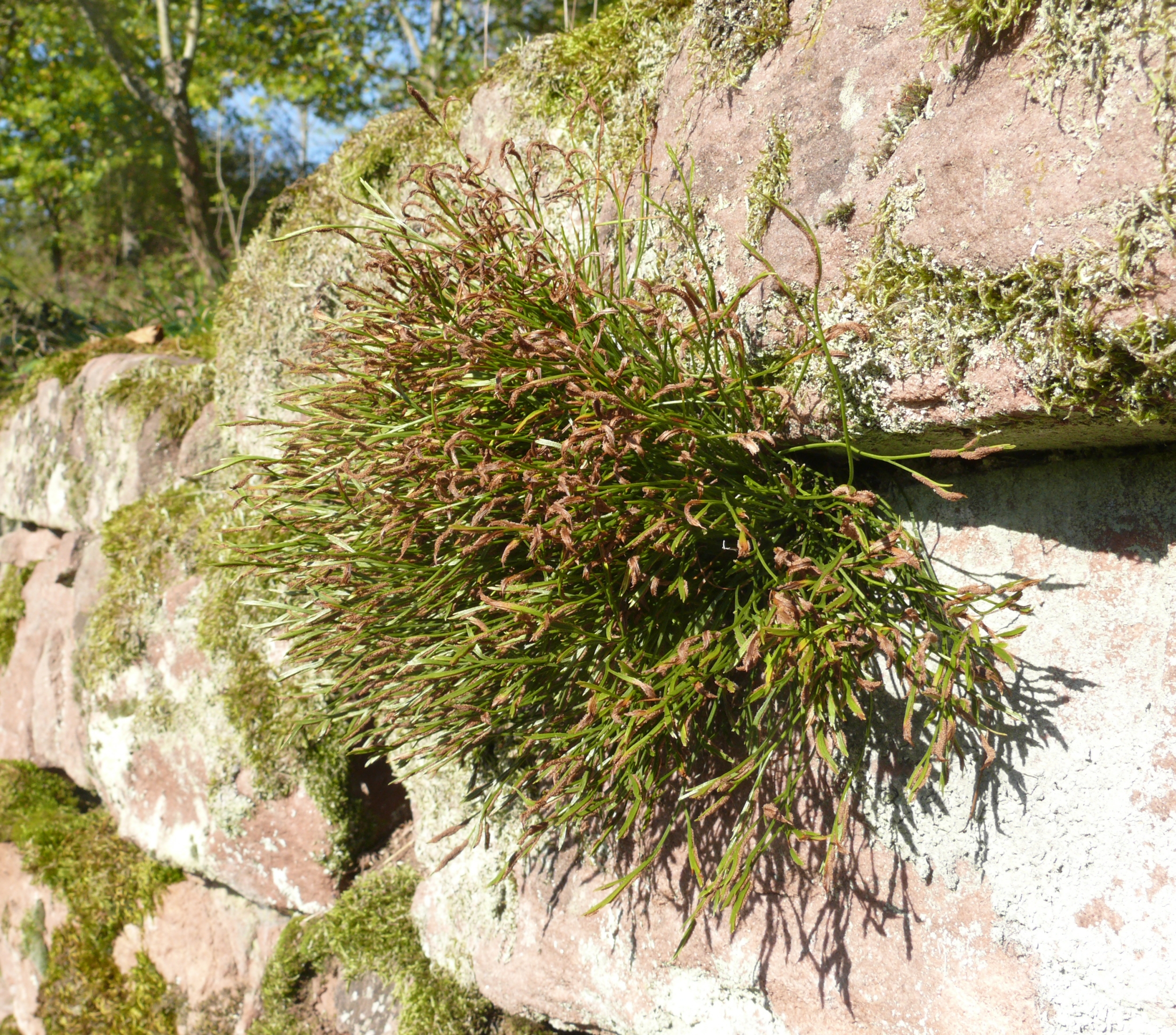Photo by Bernd Haynold licensed under CC BY-SA 3.0
What can I say, I am a total sucker for ferns with "untraditional" fronds. Whereas the tropics offer seemingly endless fern varieties, I find that there is something special about temperate ferns that, for lack of a better phrase, break the mold. I was recently introduced to such a fern. Known commonly as the forked spleenwort, Asplenium septentrionale looks more like a clump of grass than it does a fern.
A closer inspection, however, would reveal that it is indeed a Pteridophyte. It grows on rocky outcrops, including stone walls, throughout the northern hemisphere. Here in North America, it is predominantly found in the Rocky Mountains. It is a small fern that often forms dense clusters in cracks and crevices. Its stems are long, narrow, and grass-like, ending in a flattened leaf blade that often forks at the tip. In typical fractal fashion, these leaf blades fork again at the tips, forming minute pinnae.
Photo by Rolf Engstrand licensed under CC BY-SA 3.0
The forked spleenwort has gone through considerable taxonomic revisions since it was first described by Linnaeus in 1753. Originally it was named Acrostichum septentrionale, but was then moved into Asplenium a few decades later. Renewed interest in this species during the mid 20th century saw the forked spleenwort moved to the genus Chamaefilix followed by Tarachia, though these did not gain much scientific credence. As such, it has remained an Asplenium ever since.
Its taxonomic story does not end there, however, as genetic tests soon revealed that a much more subtle and nuanced revision was worth considering. It was discovered that the forked spleenwort existed in two genetically distinct types, a diploid (having two sets of chromosomes) and a tetraploid (having four sets of chromosomes). Researchers found that each group had its own distinct distribution with the diploids centered in southwest Asia and the tetraploids being circumboreal.
Photo by Bernd Haynold licensed under CC BY-SA 1.0
It was clear that a subspecies division was worth considering. Further investigations in the early 2000's revealed the presence of sterile triploid individuals that are believed to be hybrids of the two mentioned above. What's more, the forked spleenwort has been found to hybridize with other members of its genus. It is believed that the more isolated populations owe their existence in part to the isolation of their preferred substrate - these ferns do best on acidic substrates where competition is low - and decent longevity. It has been speculated that genetic differences can be maintained when "mutant" individuals become established and persist undisturbed for long periods of time.
Regardless of its taxonomic status, the forked spleendwort is nonetheless a charismatic little species. A simple image search will reveal just how pleasant this species is in situ. Even better, its beauty and splendor can be shared by botanical enthusiasts throughout the northern hemisphere. There is something to be said about such species.
Further Reading: [1]


